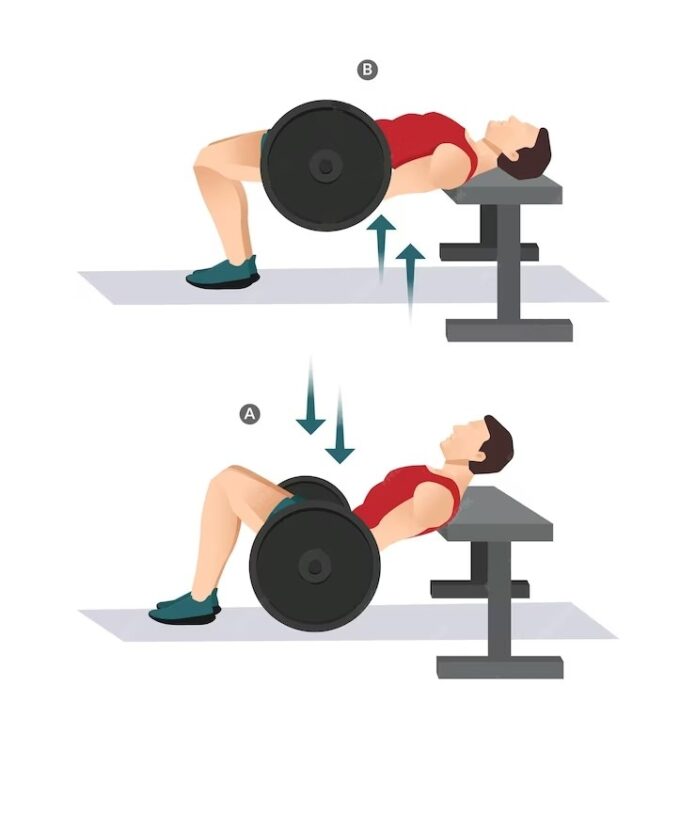Kas Glute Bridge vs Hip Thrust – When sculpting the perfect glutes, fitness enthusiasts constantly look for exercises that deliver the best results. Among the contenders in the world of glute-building workouts, two practices often stand out: the Kas Glute Bridge and the Hip Thrust. These exercises have gained popularity for their potential to shape and tone the gluteal muscles. But the question remains: Which is more effective at building better glutes? This article will dive deep into the mechanics, benefits, and drawbacks of the Kas Glute Bridge and the Hip Thrust to help you decide on the ultimate glute-building exercise.
The Anatomy of Glute Development
Before we embark on the Kas Glute Bridge vs Hip Thrust debate, let’s first understand the anatomy of the gluteal muscles and how they function. The glutes, comprised of three main muscles – the gluteus maximus, gluteus medius, and gluteus minimus, play a crucial role in various daily activities, such as walking, running, and maintaining proper posture. They are also responsible for giving your rear end its shape and firmness.
To effectively target and build the glutes, engaging all three gluteal muscles is essential. The gluteus maximus, the largest of the three, is primarily responsible for hip extension, which involves moving your thigh away from your body’s midline or straightening your hip joint from a bent position. This muscle is especially significant for creating that coveted “bubble butt” appearance.
Now that we have a basic understanding of glute anatomy, let’s compare the Kas Glute Bridge and the Hip Thrust to see how they stack up in targeting these muscles.
Kas Glute Bridge
Technique and Execution
The Kas Glute Bridge is a compound exercise that primarily targets the glutes and also engages the lower back, hamstrings, and core to some extent. Here’s how you can perform the Kas Glute Bridge:
- Lie on your back with your knees bent and your feet flat, hip-width apart.
- Place a Kas ball (a small exercise ball) between your knees.
- Press your feet into the ground, engage your core, and lift your hips off the floor by squeezing your glutes.
- As you lift your hips, maintain a straight line from your shoulders to your knees while keeping your feet and the Kas ball pressed together.
- Hold the bridge position at the top for a moment, then lower your hips back down without fully resting on the ground.
Pros of the Kas Glute Bridge
- Glute Activation: The Kas Glute Bridge effectively activates the gluteus maximus, helping to build strength and firmness in this muscle.
- Core Engagement: It engages the core muscles, contributing to overall stability and core strength.
- Low Equipment Requirement: All you need is a Kas ball, making it a simple exercise to incorporate into your routine.
Cons of the Kas Glute Bridge
- Limited Resistance: The resistance in this exercise primarily comes from your body weight and the Kas ball, which may need to provide more challenge for advanced lifters.
- Difficulty Progression: Once you master the form, it can be challenging to increase the difficulty level of the Kas Glute Bridge without additional equipment.
Hip Thrust
Technique and Execution
The Hip Thrust is another compound exercise that significantly emphasizes the glutes. Here’s how you can perform the Hip Thrust:
- Sit on the floor with your upper back against a bench or other sturdy surface.
- Roll a barbell or place a weighted plate over your hips.
- As you firmly put your feet hip-width apart on the ground, bend your knees.
- Push through your heels to raise your hips while using your core.
- Lift your hips until a straight line connects your upper body to your thighs.
- When the exercise reaches its peak, tighten your glutes.
- Lower your hips back to the starting position, but avoid resting them on the ground.
Pros of the Hip Thrust
- Progressive Overload: The Hip Thrust can quickly progress by adding more weight to the barbell or using resistance bands, making it suitable for lifters of all levels.
- Targeted Glute Activation: This exercise explicitly isolates the glutes, leading to greater muscle activation and growth.
- Versatility: You can perform Hip Thrusts with various equipment, including a barbell, dumbbell, or resistance band, depending on your preferences and equipment availability.
Cons of the Hip Thrust
- Complex Setup: Compared to the Kas Glute Bridge, the Hip Thrust requires more equipment and setup, making it less accessible for some individuals.
- Potential for Injury: If performed with improper form or too much weight, the Hip Thrust can put excess stress on the lower back and lead to injury.
Which Exercise Is Right for You?
Now that we’ve examined the mechanics, pros, and cons of the Kas Glute Bridge and the Hip Thrust, it’s time to determine which exercise is better for building glutes. However, it’s essential to recognize that there is no one-size-fits-all answer. The proper training depends on your fitness level, goals, equipment availability, and personal preferences.
Choose the Kas Glute Bridge If:
- You are a beginner looking to activate and strengthen your glutes.
- You have limited access to equipment, as the Kas Glute Bridge requires minimal gear.
- You want an exercise that engages the glutes and the core with little added resistance.
- You are perfecting your form and technique before progressing to more challenging exercises.
Choose the Hip Thrust If:
- You are an intermediate or advanced lifter looking for a more advanced glute-building exercise.
- You can access a barbell, dumbbell, or resistance bands to add resistance to the movement.
- You want to target and isolate your glutes for maximum growth and activation.
- You are comfortable with compound movements and have a strong foundation in weightlifting.
Combining Both Exercises
For many fitness enthusiasts, a well-rounded glute workout may involve incorporating the Kas Glute Bridge and the Hip Thrust into their routine. By doing so, you can benefit from the unique advantages of each exercise while avoiding potential drawbacks. Here’s how you can structure a workout that combines both activities:
- Warm up with dynamic stretches and mobility exercises to prepare your glutes for the workout.
- Start with the Kas Glute Bridge to activate and engage your glutes and core. Perform 3 sets of 12-15 repetitions with a Kas ball or other light resistance.
- Transition to the Hip Thrust for a more targeted glute workout. Use a barbell, dumbbell, or resistance band, and perform 3 sets of 8-10 repetitions with progressively heavier weights.
- Cool down with static stretches to enhance flexibility and reduce post-workout muscle soreness.
Remember that consistency is critical when it comes to building better glutes. Incorporate these exercises into your routine regularly and progressively increase the intensity over time to see noticeable improvements in the shape and strength of your glutes.
Conclusion
The Kas Glute Bridge and the Hip Thrust are practical exercises for building better glutes, but they cater to different fitness levels and preferences. Your choice should be based on your experience, goals, and equipment availability. Ultimately, the best approach may involve incorporating both exercises into your glute workout routine to enjoy a balanced and comprehensive lower body workout. Regardless of your choice, consistency, proper form, and progressive overload will be the keys to unlocking your glute-building potential. So, get out there, hit the gym, and start sculpting the glutes you’ve always dreamed of!

